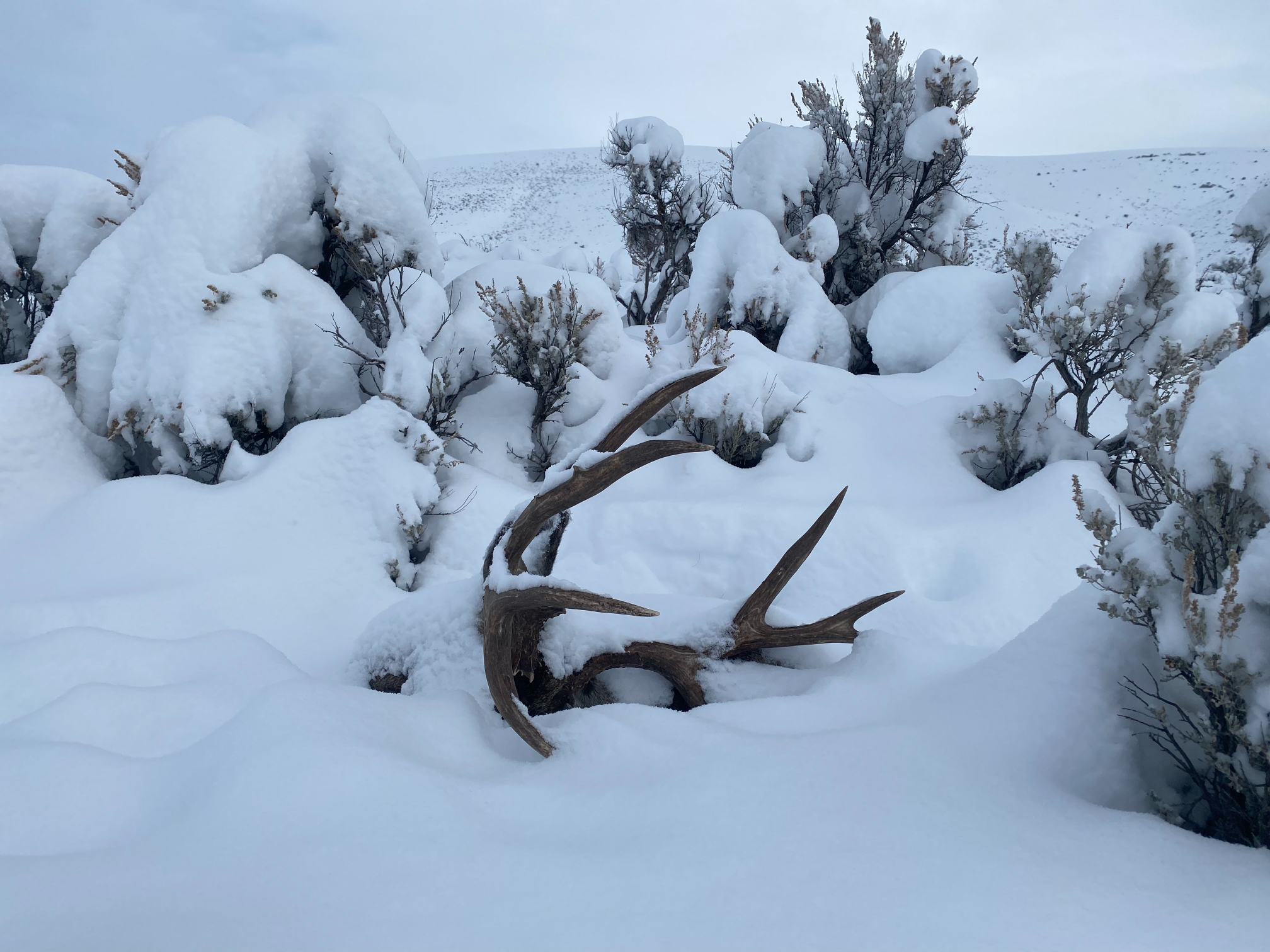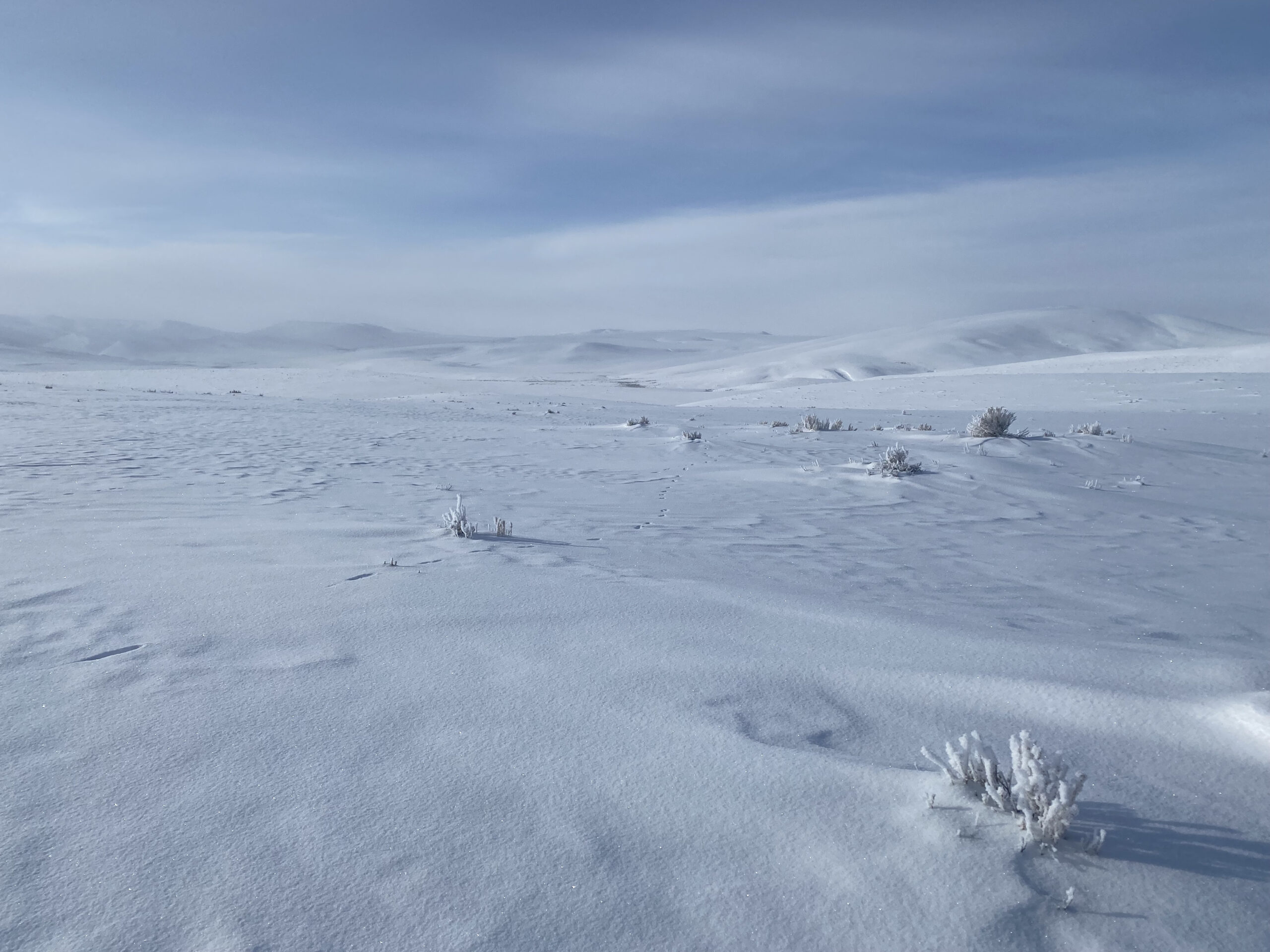I always think that it will be easy, and I am always wrong. I’ve learned the lesson a hundred times by now. If I knew that it would be hard every time, it would be difficult to get out the door, on the road for half the day, and out into the loneliest landscape I’ve ever walked. If I knew it would be as hard as it was, every time, would I go?
It took me three hours to walk a little over a mile to where I knew he lay. The snow was so deep, it covered whole sagebrush and mountain mahogany. So deep, I sank to my knees with every step I took in snowshoes—without them, I would have sunk to my hips or to my chest. But the snowshoes came at a cost. The snow was warm, and it was heavy like concrete. It filled in my snowshoes so that with each step I pulled with me likely 20 pounds of snow. Four hundred yards from him, I collapsed in frustration and exhaustion.
Along the way I sensed that others were dead all around me. Magpies and ravens took off from several concealed and concentrated places, rejoicing in their winter meals. The dead remained hidden, but I know they were there.

Thirty yards from him, I cut an ungulate trail. A deep trench in the snow that animals use over and over to save themselves a little energy. I turned east to travel along it, joining my trail with possibly thousands of deer that came before me. I knew he wouldn’t be far from it.
Mule deer blend into their winter landscape like ghosts on the wind. A huge form curled up in a gentle ball in a deer trail, head bowed as though in sleep, body fully shrouded in last night’s fresh snow, like the landscape and the winter and the storm wanted to keep him as a treasured secret forever.
That is how I found him, the final hours of his life clearly painted for me. I could almost see the rise and fall of his body in peaceful sleep, his letting go, the last burst of his hot breath rising.
It is my responsibility to know what happened, to learn how he died. So, I did the only thing I regret having to do that day and pulled him from his resting place. But the image—no, the feeling of him the way I found him, the whisper of his gentle ghost in passing—it will haunt me for the rest of my life.
I would not mar him. I would learn the cause of his death but preserve him as I went. Preserve him because he was whole and unsoiled and unfrozen. And he can help us teach and others learn. I would carry what pieces of him I could home with me.
I get to work, slowly and carefully, and skin him out. As I skin, I notice how delicate he is. How there isn’t any fat anywhere on his body. How his hide hangs loosely over a bony frame. How I can see his rib bones shining white through his pink muscle once I’ve skinned his sides. How he barely has anything left.
Now, I break a femur. The marrow inside is light-brown and translucent and jiggles in a slimy way like rotten jelly.
I roll up his hind cape and can just fit it into my pack. His head is going to be a problem. I forgot cordage, and the straps on my pack are not long enough to attach around him, which I have never had an issue with before. It isn’t until this moment, when I understand that I must carry him in my arms, that I realize how big he is. How broad and large his skull. How thick and heavy his antlers, how far their tines are flung up and out from his ears.
His is the story of many. It isn’t always red in tooth and claw at the end. Often it is white and cold and dark and all alone—the product of hunger and exertion, our reminder that the landscape giveth and the landscape taketh away. Rather than die at the teeth of a carnivore, many lie down to die alone.
In the morning, I bring him to my boss, Kevin, for the next phase of his preservation into a shoulder mount for outreach and education. Kevin nearly falls over when he sees him. He skins the rest of the cape from his skull. We find an infection in the right side of his face, where a wound in his mouth made a space between his gums and his cheek that shouldn’t have been there. Where food packed in and festered. It must have hurt him. It must have made it hard for him to eat.
Here is how he is recorded in our database:
Animal ID: M037
End Date: 01/05/2023
Age: 9 ½
Cause of Death: Malnutrition
Antler Score: 194.125
And I will never be the same.
Written by Rebekah Rafferty, PhD student on the Wyoming Range Mule Deer project.

